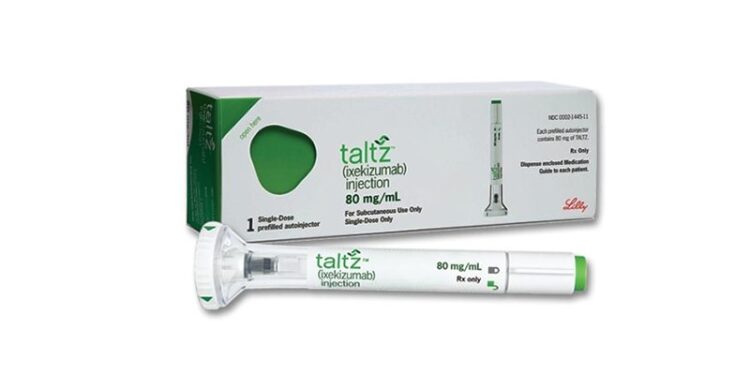TOPLINE:
Long-term treatment with ixekizumab was associated with a low incidence of malignant neoplasms in patients with psoriasis, psoriatic arthritis (PsA), and axial spondyloarthritis (axSpA), rates that aligned with those of the general population, supporting a favorable long-term safety profile.
METHODOLOGY:
- Researchers analyzed pooled data from 25 randomized clinical trials involving 6892 patients with psoriasis (31.9% women; 81.5% White, 13.3% Asian, 12% Hispanic or Latino), 1401 with PsA (51.5% women; 91.5% White, 9.3% Hispanic or Latino), and 932 with axSpA (30.3% women; 74.1% White, 22.4% Hispanic or Latino, 19.5% Asian).
- Participants had received at least one dose of ixekizumab over 5 years (psoriasis) or 3 years (PsA and axSpA). The mean age across all three indications was 45.9 years.
- Researchers computed exposure-adjusted incidence rates (IRs) of malignant neoplasms per 100 patient-years (PYs) and calculated indirect age- and sex-standardized incidence ratios (SIRs) using SEER 2013-2017 data.
- The cumulative exposure to ixekizumab was 22,371.1 PYs, with a maximum follow-up duration of 6.1 years for psoriasis, 3.4 years for axSpA, and 3.3 years for PsA.
TAKEAWAY:
- Malignant neoplasms were reported in 2.0% of patients with psoriasis (IR, 0.8 per 100 PYs), 1.1% of patients with PsA (IR, 0.7 per 100 PYs), and 1.0% of patients with axSpA (IR, 0.4 per 100 PYs).
- SIRs were ≤ 1 for patients with psoriasis (0.89; 95% CI, 0.71-1.08), PsA (0.49; 95% CI, 0.13-0.85), and axSpA (1.07; 95% CI, 0.37-1.77) compared with those for the US general population.
- Nonmelanoma skin cancer rates were low in patients with psoriasis (IR, 0.3 per 100 PYs; 95% CI, 0.2-0.4) and PsA (IR, 0.4 per 100 PYs; 95% CI, 0.2-0.8), with no cases reported in axSpA.
- Malignancy IRs remained constant over time, not exceeding 1.2 per 100 PYs across all periods examined.
IN PRACTICE:
“This study shows that the safety profile of IXE [ixekizumab] supports its long-term use in patients with PsO [psoriasis], PsA, or axSpA, without an increased risk for malignant neoplasm development,” the authors of the study wrote, noting that this conclusion “is substantiated by SIRs of malignant neoplasms observed across the indications under study, which were comparable to those observed in the US general population.” The results “should provide clinicians and patients with additional confidence in IXE as a reliable treatment option for long-term use in individuals with PsO, PsA, or axSpA,” they added.
SOURCE:
This study was led by Joseph F. Merola, MD, UT Southwestern Medical Center, Dallas, and was published online on July 9 in JAMA Dermatology.
LIMITATIONS:
Compared with the general patient population, the trial population was healthier on average. The generalizability of the study was limited by the small sample size with limited racial and geographic diversity. Additionally, follow-up was shorter for PsA and axSpA, and no active comparator groups were used.
DISCLOSURES:
This study was funded by Eli Lilly and Company. Merola reported being a consultant and investigator for Amgen, AstraZeneca, Boehringer Ingelheim, Bristol Myers Squibb, AbbVie, Dermavant, Eli Lilly and Company, MoonLake, Novartis, Janssen, Oruka, UCB, Sanofi-Regeneron, Sun Pharma, Biogen, and Pfizer. Several authors reported having various ties with Eli Lilly and other drug companies.
This article was created using several editorial tools, including AI, as part of the process. Human editors reviewed this content before publication.
Source link : https://www.medscape.com/viewarticle/long-term-ixekizumab-treatment-does-not-raise-risk-cancer-2025a1000i55?src=rss
Author :
Publish date : 2025-07-09 15:00:00
Copyright for syndicated content belongs to the linked Source.














